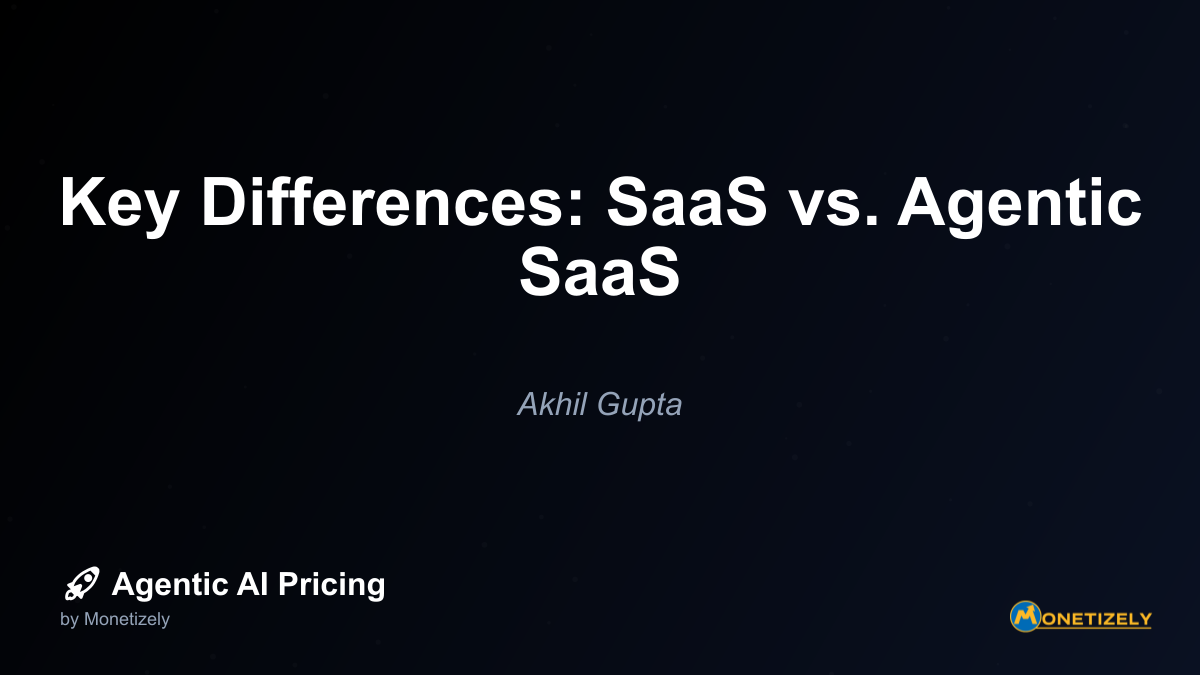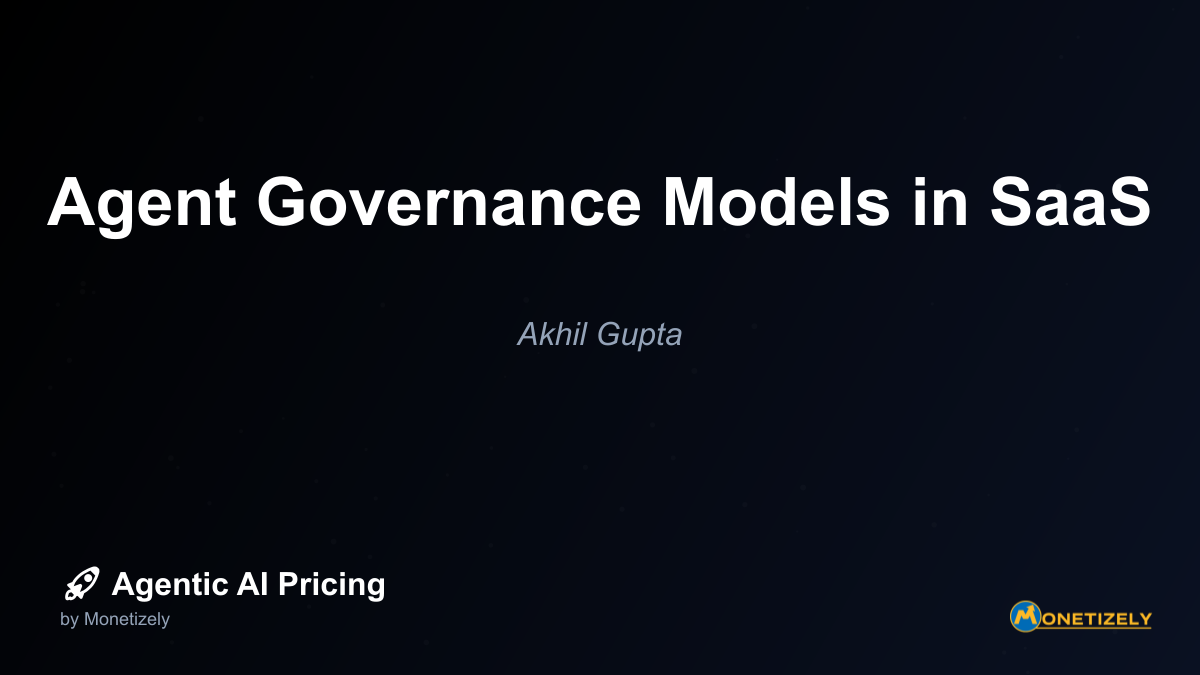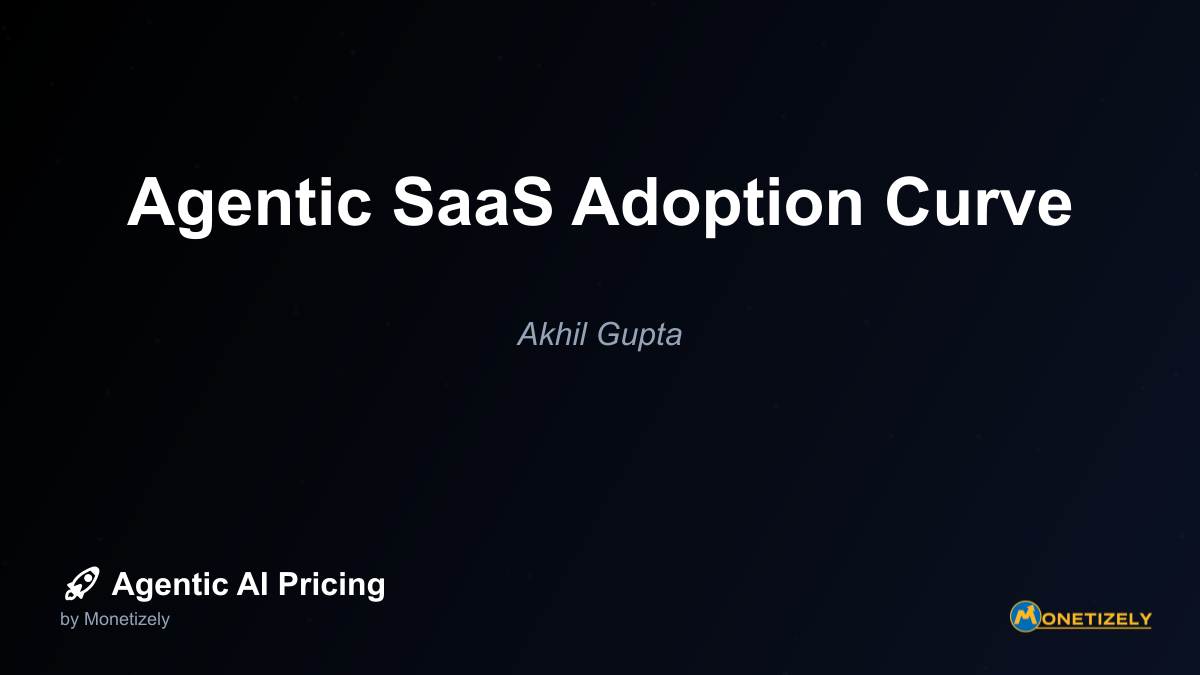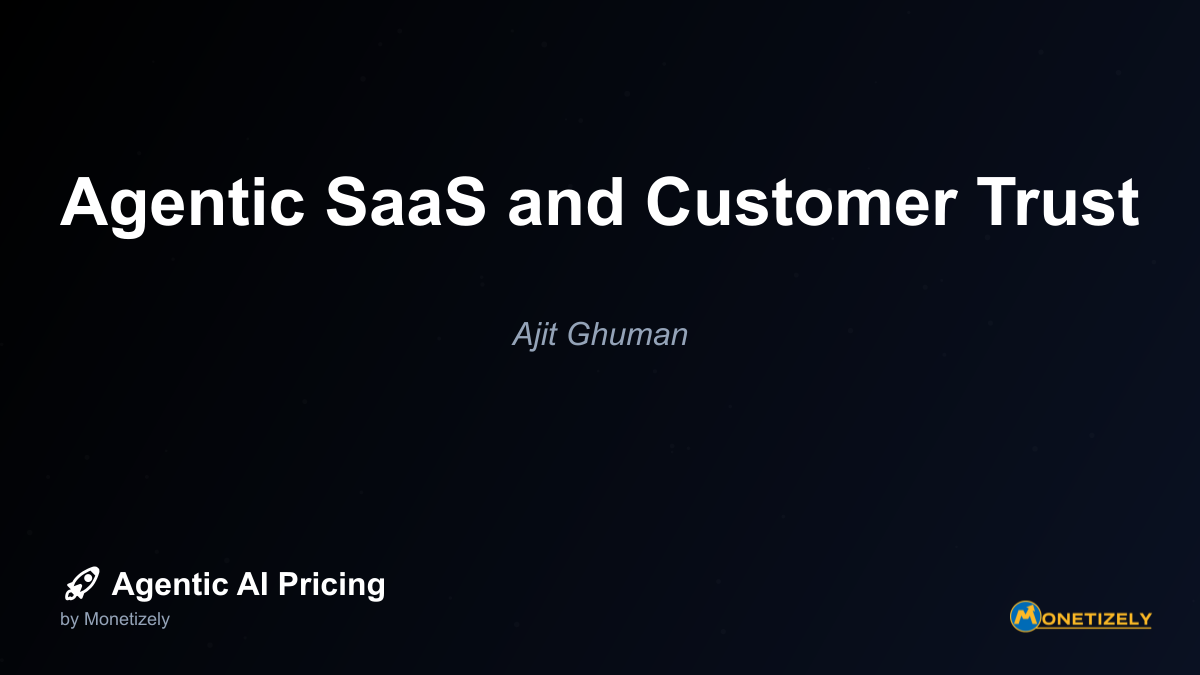· Ajit Ghuman · Agentic SaaS Fundamentals · 5 min read
Agentic SaaS vs. RPA SaaS
AI and SaaS Pricing Masterclass
Learn the art of strategic pricing directly from industry experts. Our comprehensive course provides frameworks and methodologies for optimizing your pricing strategy in the evolving AI landscape. Earn a professional certification that can be imported directly to your LinkedIn profile.
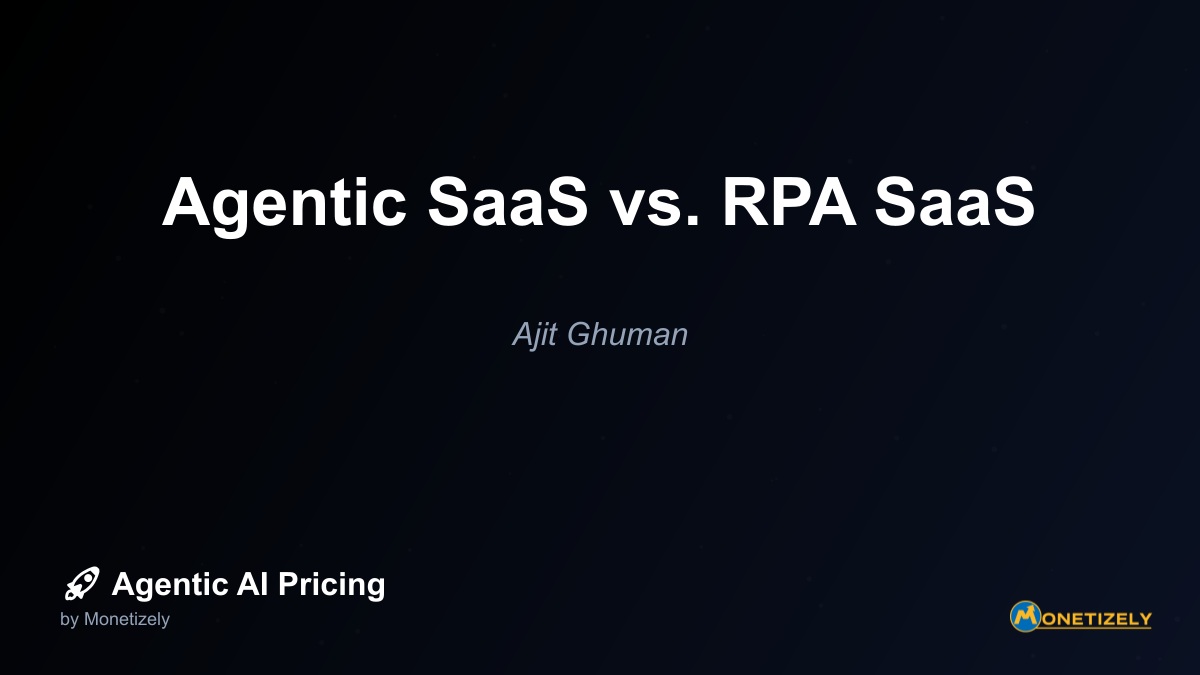
Traditional RPA Pricing Models
RPA pricing structures typically follow several established patterns:
- Per-bot licensing: Organizations pay for each “digital worker” or bot instance, often with annual licensing fees
- Process-based pricing: Costs scale based on the number of automated processes
- Transaction-based models: Fees tied to the volume of transactions processed
- Enterprise licensing: Fixed-fee arrangements for unlimited deployment within defined boundaries
These models reflect RPA’s origins as enterprise software, with predictable costs that scale primarily with deployment scope rather than usage intensity.
Agentic SaaS Pricing Approaches
Agentic solutions introduce more nuanced pricing considerations that reflect their advanced capabilities and consumption patterns:
- Compute-based pricing: Costs tied to the computational resources consumed during agent operation
- Outcome-based models: Pricing aligned with the business results delivered
- Hybrid consumption models: Combining base subscription fees with usage-based components
- Value-share arrangements: Revenue sharing based on quantifiable value created
As discussed in our comparative analysis of AI pricing models, agentic solutions tend to emphasize value alignment in their pricing structures, with greater emphasis on outcomes rather than just operational metrics.
Total Cost of Ownership Considerations
The full economic picture extends beyond licensing costs to include:
For RPA:
- Initial development costs (process mapping, script creation)
- Maintenance expenses for script updates
- Infrastructure requirements
- Training for RPA developers and business users
- Exception handling resources
For Agentic SaaS:
- Initial configuration and training costs
- Ongoing compute expenses that may vary with usage patterns
- Monitoring and governance overhead
- Integration with existing systems
- Performance optimization investments
While RPA often has higher upfront development costs but predictable ongoing expenses, agentic solutions may require less initial configuration but potentially more variable operational costs depending on usage intensity and complexity.
Strategic Decision Framework
Organizations evaluating these automation approaches should consider several key dimensions:
Process Characteristics Assessment
Evaluate your automation candidates along these dimensions:
- Complexity spectrum: Where does the process fall between simple, rule-based tasks and complex, judgment-intensive work?
- Stability assessment: How frequently do the underlying processes, systems, or requirements change?
- Exception frequency: What percentage of cases require human intervention due to unusual circumstances?
- Decision density: How many decision points exist within the process flow?
Processes with high complexity, frequent changes, numerous exceptions, and dense decision requirements typically favor agentic approaches, while stable, rule-based processes with minimal exceptions may be better suited to RPA.
Organizational Readiness
Consider your organization’s readiness for each technology:
- Technical capabilities: Do you have the necessary skills for development and maintenance?
- Governance maturity: Are appropriate oversight mechanisms in place?
- Change management capacity: How will you manage the transition to automated processes?
- Risk tolerance: What is your comfort level with autonomous systems making decisions?
RPA may be more accessible for organizations early in their automation journey, while agentic solutions might require more sophisticated governance and oversight capabilities.
Hybrid Approaches
Many organizations find value in combining both technologies:
- RPA for foundation processes: Using traditional automation for stable, high-volume transactional work
- Agentic solutions for complex tasks: Deploying intelligent agents where judgment and adaptability are required
- Orchestrated workflows: Creating end-to-end processes where RPA and agentic components work together
- Progressive transformation: Starting with RPA and gradually introducing agentic capabilities as processes mature
This pragmatic approach leverages the strengths of each technology while managing implementation complexity and organizational change.
Future Convergence Trends
The distinction between RPA and agentic solutions is likely to evolve in several ways:
Intelligent Process Automation
Traditional RPA vendors are increasingly incorporating AI capabilities into their platforms, creating “intelligent process automation” solutions that combine scripted workflows with elements of machine learning and natural language processing.
Specialized Agentic Solutions
Rather than general-purpose agents, we’re seeing the emergence of domain-specific agentic solutions optimized for particular industries or functions, with built-in knowledge and capabilities tailored to specific use cases.
Low-Code Agent Development
New platforms are emerging that simplify the creation and deployment of agentic solutions through low-code interfaces, making these technologies more accessible to business users rather than requiring specialized AI expertise.
Collaborative Human-Agent Workflows
The future likely involves more sophisticated collaboration models where humans and digital agents work together, with each handling the aspects of work best suited to their respective strengths.
Implementation Best Practices
Organizations pursuing either or both automation approaches should consider these best practices:
Start with Clear Objectives
Define specific business outcomes rather than focusing solely on technology implementation. Whether using RPA or agentic solutions, success should be measured in business impact rather than deployment metrics.
Establish Strong Governance
Create appropriate oversight mechanisms that balance autonomy with control. This is particularly important for agentic solutions where decision-making is less deterministic than traditional RPA.
Invest in Change Management
Prepare your workforce for changing roles and responsibilities. Automation technologies are most successful when employees understand how their work will evolve and are equipped for new ways of collaborating with digital systems.
Build for Scalability
Design your automation architecture to grow with your needs. This includes considering how different automation technologies will interact and how to manage the increasing complexity of your automation portfolio.
Measure and Optimize Continuously
Establish clear metrics to track performance and continuously improve your automated processes. This ongoing optimization is essential for maximizing return on investment for both RPA and agentic implementations.
Conclusion
While RPA and agentic SaaS solutions share the common goal of automating work, they represent fundamentally different approaches with distinct capabilities, implementation requirements, and pricing models. RPA excels at executing well-defined, rule-based processes with precision and consistency, while agentic solutions bring intelligence and adaptability to more complex, judgment-intensive tasks.
Rather than viewing these technologies as competing alternatives, forward-thinking organizations are increasingly adopting a complementary approach—using RPA for stable, transactional processes while deploying agentic solutions where adaptability and decision-making are required. This strategic combination allows businesses to automate a broader spectrum of work while managing implementation complexity and organizational change.
As automation technologies continue to evolve, the boundaries between RPA and agentic solutions will likely blur, with traditional automation platforms incorporating more intelligence while agentic systems become more accessible and governance-friendly. Organizations that develop a nuanced understanding of these technologies’ respective strengths and limitations will be best positioned to create comprehensive automation strategies that deliver sustainable competitive advantage.
The journey from RPA to agentic automation represents not just a technological evolution but a fundamental shift in how we conceptualize the relationship between human workers and digital systems—moving from tools that execute our instructions to partners that collaborate in achieving our objectives.
Co-Founder & CEO
Ajit is the author of Price To Scale, a top book on SaaS Pricing and is the Founder of Monetizely. Ajit has led and worked in pricing and product marketing at firms like Twilio, Narvar and Medallia. His work has been featured in Forbes and VentureBeat. Ajit regularly consults with software companies from Seed stage to post-IPO on pricing strategy. Ajit is also a highly-rated co-instructor for 'The Art of SaaS Pricing and Monetization' on Maven.
Pricing Strategy Audit
Let our experts analyze your current pricing strategy and identify opportunities for improvement. Our data-driven assessment will help you unlock untapped revenue potential and optimize your AI pricing approach.

